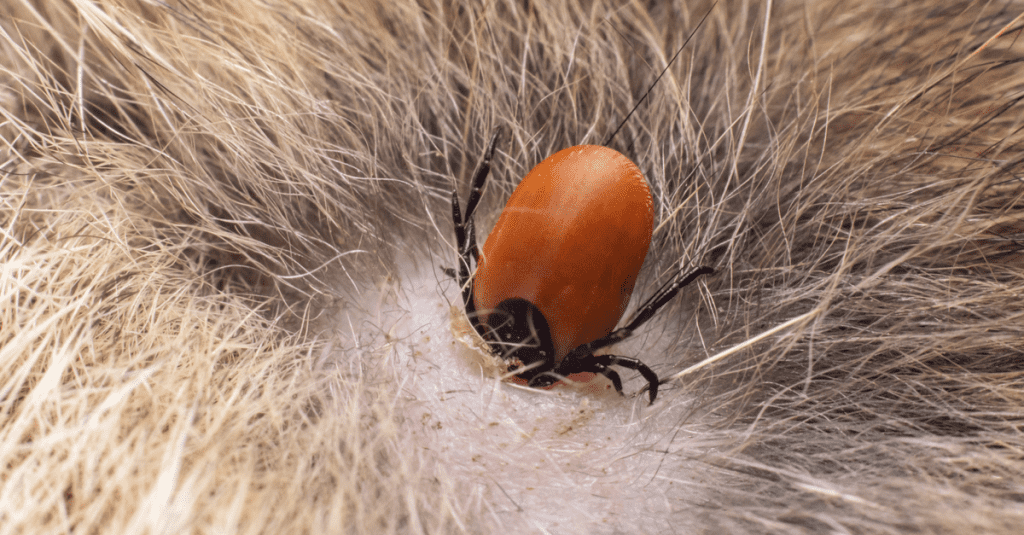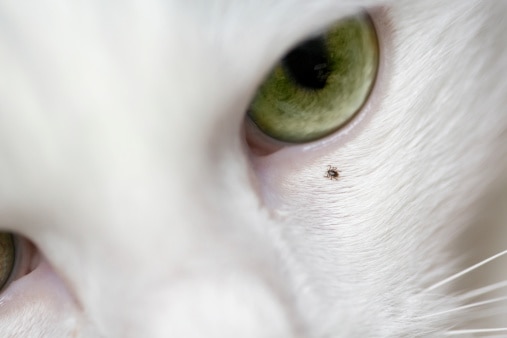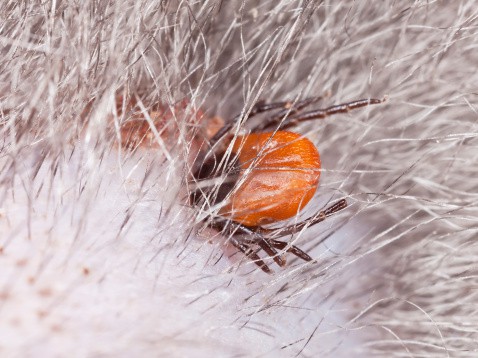While most of us can agree that cats are safest when kept strictly indoors, a great many pet parents have kitties that are allowed access to the great outdoors. If your cat spends any time outside, checking him for ticks should be a part of your daily routine. Not only are ticks nasty to look at, but they can also transmit several deadly diseases to your feline friend – like Lyme Disease, Haemobartonellosis, Tularemia, Babesiosis, and Cytauxzoonosis. All of these are highly dangerous for your cat – especially if left unchecked. So it’s important to remove ticks immediately, and properly.
Here’s how to check your cat for ticks and, should you happen to find one, how to remove it.

How to Check Your Cat for Ticks
Run your hands slowly over every inch of your cat’s body. Ticks are attracted to dark, hidden areas, so be sure not to miss between your kitty’s toes and under his armpits, in the ears and under the tail. If your cat has long hair, take extra time to be sure you’re not missing any inch of skin as ticks can hide deep in long fur. If you feel a lump or bump, spread his fur and check to see if a tick has burrowed there.
Ticks are small, but visible to the naked eye. They’re typically about the size of a pea but some can be even smaller, so look carefully. They can be black, tan or brown and have 8 legs. They don’t move around very much once they find a place to feed. And, the longer they’re attached, the larger they will become as their bodies fill with blood.
How to Remove a Tick Safely
If you find a tick on your cat, don’t panic. You can safely remove it but you’ll need to be careful to remove the entire tick.
You’ll need:
• disposable gloves
• tweezers or tick remover tool
• antiseptic wipes
• Isopropyl alcohol
• Triple antibiotic ointment

You’ll definitely want to wear gloves when you remove the tick, as they can transmit awful diseases to humans, too. Then, using tweezers or a special tick removal tool, grasp the tick by the head – as close to your cat’s skin as possible without pinching your cat’s skin – and pull the tick straight out, slowly and firmly. Take extreme caution to not squeeze the tick’s body, as you don’t want to pull the tick’s body apart while you’re removing it.
Wive’s Tales About Ticks
Have you heard the old wive’s tales that say burning the tick with a match or applying something to your cat’s skin will force a tick to “back out?” Don’t use these methods. They don’t work! It’s most important to remove the tick quickly and keep it intact. Here’s why:
After you remove the tick, don’t squash it to kill it. Instead, you should drop the entire bug into a container of Isopropyl rubbing alcohol. Then save the container, so if your cat does happen to become sick after a couple of days with a tick-borne illness, your veterinarian can identify the tick and test it, if necessary.

The area where the tick was attached will leave a small sore on your cat’s skin. Clean that area with an antiseptic wipe and apply a little dab of triple antibiotic ointment, if you wish. Watch the area over the next several days to make sure you don’t see any signs of infection. A small raised bump may appear – this is perfectly normal – but it shouldn’t be red, swollen, or itchy. If anything seems out of the norm to you, take your cat to the veterinarian at once, and bring the tick you removed with you.
Also, keep an eye on your kitty over the next few weeks for signs of tick-borne illness. These include fever, swollen lymph nodes, lethargy, loss of appetite, joint pain, depression, and reluctance to move. If you see any of these signs, make an appointment with your veterinarian right away. The sooner you have your pet treated for tick-borne illness, the better the prognosis will be.
Prevention is the Best Medicine

If ticks are a known problem in your area (about 65% of the United States has naturally occurring tick populations), speak to your veterinarian about monthly tick prevention for your cat, like the Seresto collar or Frontline for Cats, both of which also take care of fleas. Even if your kitty only roams in your backyard, keeping your lawn, bushes and trees trimmed will help keep ticks in check in the yard. If they’re still a problem in your yard, consider treating your lawn or hiring an exterminator, being careful not to allow your cat into the yard after it’s been treated until it’s safe.
Do you have any experience with ticks on your cat? Please, share them in a comment below. And, if you found this article helpful, help us by pinning it!





